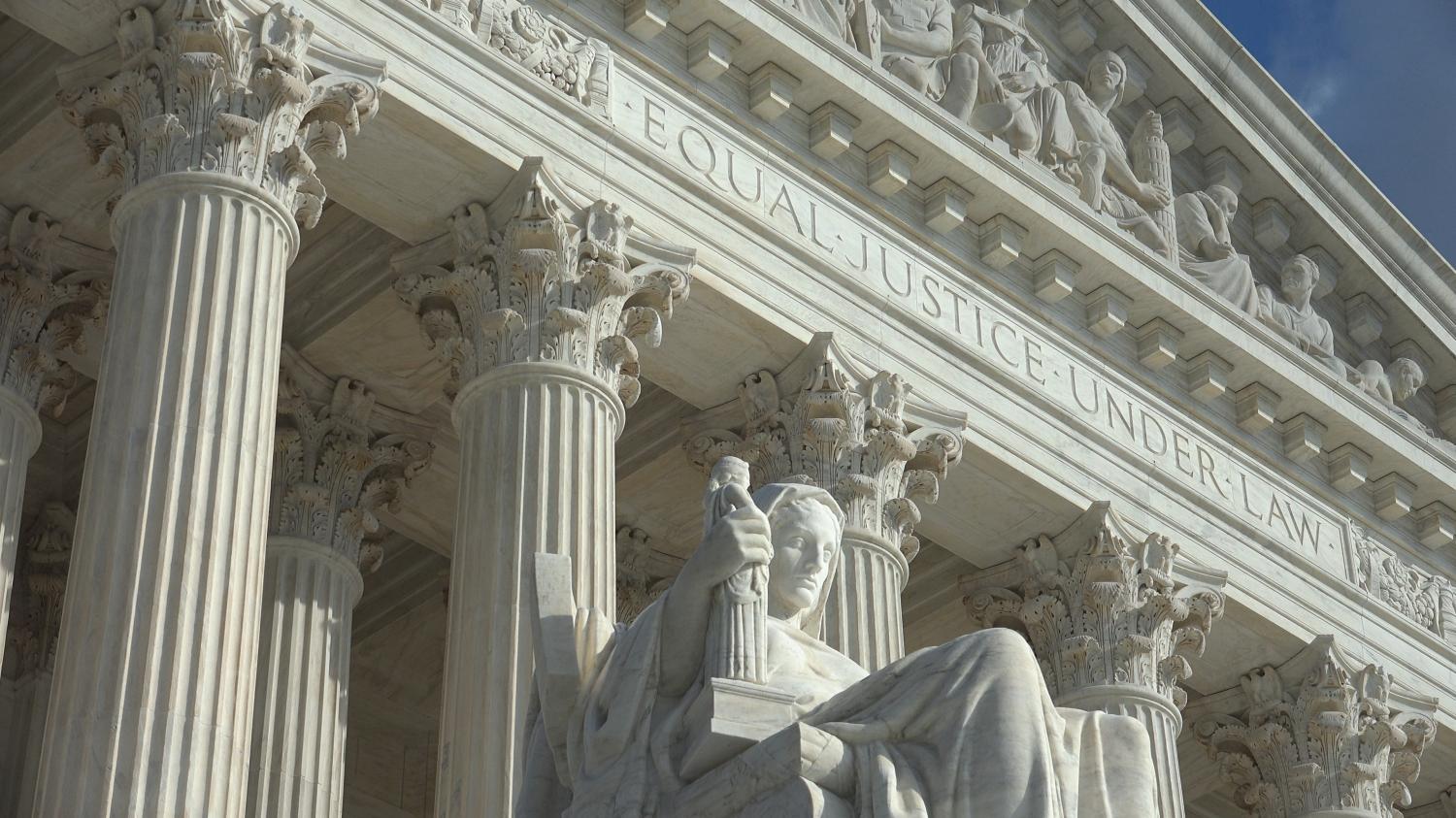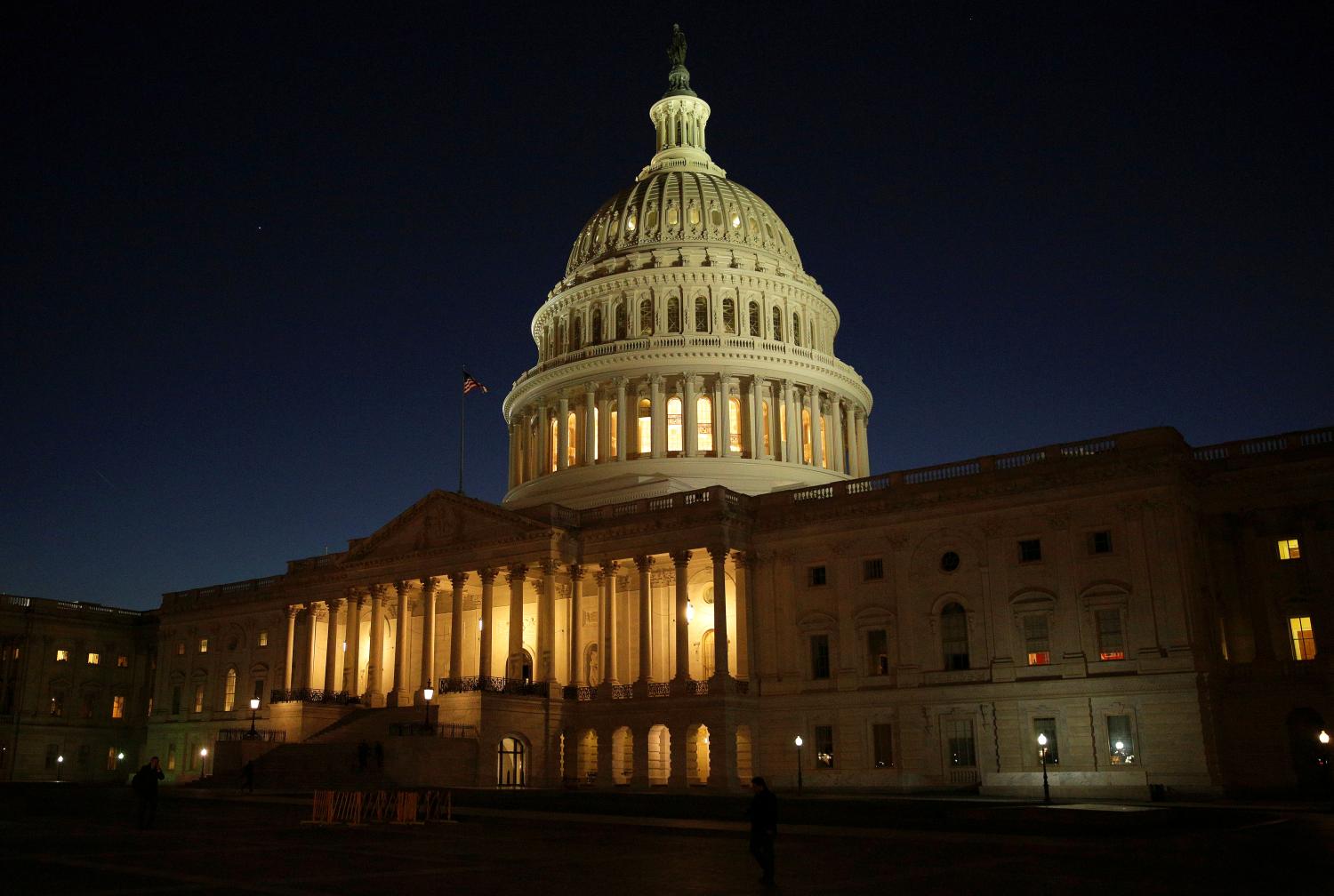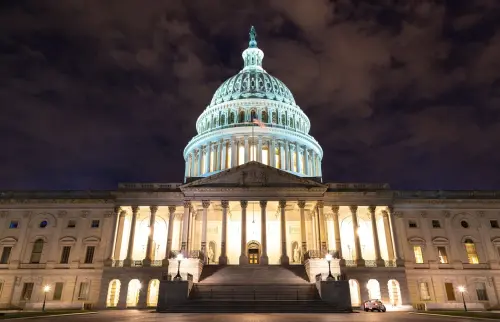Will Chevron deference—where courts defer to reasonable agency interpretations of ambiguous statutes—make it to its fortieth birthday in 2024? Commentators predicted the framework might fall in the Supreme Court’s recently concluded term, some cheering and others fearing such an outcome. But the Court remained quiet on the case, as it has done repeatedly in recent years. This silence could be temporary, however, as the Court may soon decide to hear some cases that tee up the issue.
Agencies look like they are meeting this silence with silence (or a very soft voice about deference) and presumably will continue to do so. If agencies can’t frame regulatory decisions as compelled by their statutes, they will presumably try to sell them as the best interpretation of the congressional instructions they were given. Agencies are not foolish; they will not tie their decisions’ viability to a case the Court is no longer eager to embrace.
In this note, we discuss two big statutory interpretation cases from the past term where the Court could have relied on or rejected Chevron, examining how they fit into recent Court patterns in this area. We then turn to the potential implications for agency regulation by exploring agency practices through Brookings’s Regulatory Tracker.
Hospital Reimbursement Rates at the Court
Two Supreme Court cases this past term, American Hospital Association (AHA) v. Becerra and Becerra v. Empire Health Foundation, challenged whether the Department of Health and Human Services (HHS) overstepped when promulgating rules that altered how it calculates reimbursement rates for certain hospitals. Technical? Yes, but given the current conservative makeup of the Supreme Court, many speculated that the Court could use one of these cases to overrule Chevron deference, as lower courts had relied on the case in reviewing the rules.1 Instead, Chevron was conspicuously absent from both rulings.
In AHA, the Court considered whether HHS has the authority to alter reimbursement rates for outpatient drugs covered under Medicare Part B for certain hospitals. Some hospitals participate in a government program that allows them to acquire these drugs directly from manufacturers, reducing the cost of these drugs by 20-50 percent. HHS reasoned that these hospitals should be reimbursed at a lesser rate.
The Medicare Prescription Drug, Improvement, and Modernization Act of 2003 stipulated that HHS may set reimbursement rates for these hospitals in one of two ways: It may reimburse at the average sales price of the drug, or it may “calculate and adjust” the rate for each hospital by using survey data collected by the agency. From 2006 to 2017, HHS used the former method. In 2017, however, HHS reduced reimbursement rates for hospitals participating in the government program to 77.5 percent of the average sales price on the assumption that they had acquired the drug at reduced cost.
AHA sued HHS, and the Supreme Court, in a unanimous opinion written by Justice Kavanaugh, sided with the Association, reversing the decision of the D.C. Circuit. The Supreme Court stated that HHS lacked the underlying survey data that is required by the 2003 law to adjust the rate downward, stating that “when enacting [the Medicare Modernization Act] in 2003, Congress was well aware that [certain] hospitals paid less for covered prescription drugs. … Congress nonetheless did not see fit to differentiate [these] hospitals when requiring that reimbursement rates be uniform” if the agency does not conduct a survey. In the Court’s reading of the statute, there was no textual ambiguity, and apparently that meant there was no need to even enter into Chevron’s analysis.
In Empire Health Foundation, the Court looked at whether HHS legally changed the method by which it reimburses hospitals serving a high proportion of low-income patients for Medicare Part A (inpatient care). Because hospitals with a higher proportion of low-income patients generally have higher expenses, HHS reimburses them with additional funds if they meet a certain threshold. One metric that helps determine the reimbursement rate is based on the proportion of those “entitled” to Medicare in the hospital who are also low-income.
In 2004, HHS enacted a rule that clarified “entitled” to mean all those who are eligible for the program (people over 65 and people with disabilities). The Empire Health Foundation sued, claiming that “entitled” should apply only to patients entitled to Medicare payment for their care in the hospital, which would not include those who may fit the eligibility criteria for Medicare but are not getting compensated by Medicare for their stay in the hospital. Because of its calculation of the “Medicare fraction,” HHS‘s rule generally, though not always, reduced the reimbursement funds paid to hospitals with low-income patients.
No direct reference to Chevron appeared in either opinion—not even to describe rulings in the lower courts.
In a 5-4 decision authored by Justice Kagan, the Supreme Court took HHS’s side, reversing the lower court and finding that “entitled” in Medicare law at large includes all those who are eligible for the program and that a different definition of the term here would conflict with how it is used elsewhere in the Medicare statute.
No direct reference to Chevron appeared in either opinion—not even to describe rulings in the lower courts. In AHA, the Court had this to say about the agency’s interpretation: “We must hesitate to adopt an interpretation that would eviscerate such significant aspects of the statutory text. … In sum, after employing the traditional tools of statutory interpretation, we do not agree with HHS’s interpretation of the statute.”
In Empire Health Foundation, the Court acknowledged that the “ordinary meaning of the fraction descriptions, as is obvious to any ordinary reader, does not exactly leap off the page.” But it posited that when the statute is read by specialists, “the fraction descriptions disclose a surprisingly clear meaning—the one chosen by HHS. The text and context support the agency’s reading: HHS has interpreted the words in those provisions to mean just what they mean throughout the Medicare statute,” and “‘entitled to [Part A] benefits’ means qualifying for those benefits, and nothing more.” (The dissent, written by Justice Kavanaugh, concluded: “In my view, HHS’s 2004 interpretation is not the best reading of this statutory reimbursement provision.”)
Where’s Waldo (Chevron)?
Chevron deference, the fundamental principle established in a landmark 1984 Supreme Court case that upholds reasonable agency interpretations of ambiguous statutes Congress has tasked the agency with implementing, took some time to generate a fanbase. In Professor Thomas Merrill’s recounting of Chevron’s rise, Department of Justice lawyers, who used the case in defending agency actions, and the D.C. Circuit played critical roles in turning Chevron into a cornerstone of American administrative law. By the 1990s, according to Merrill, the Court was using the framework—at the first step determining whether Congress has spoken directly to the issue and if not, at the second step, assessing whether the agency’s interpretation was permissible—in more than half of its statutory cases involving agencies.
To be clear, the agency does not always win under Chevron. Critically, courts can find that the statute unambiguously bars the agency’s interpretation, without ever considering deference. For instance, a decade after Chevron, in MCI Telecommunications Corp. v. AT&T Co., the Court held that the Section 203 of the Communications Act, which allows the FCC to “modify any requirement,” barred the agency from excusing MCI from filing tariffs. In a comprehensive study of court of appeals’ decisions that applied Chevron from 2003 to 2013, 30 percent were resolved at the first step. Agencies won only 39 percent of these cases.
After a sixteen-year honeymoon phase, the Court began to limit Chevron’s scope significantly in 2000. Though the Court maintained that the framework still applied in many cases of ambiguous statutory language, even with prior court interpretations, the justices largely restricted deference to agencies that had reached their interpretations in more formal proceedings. More recently, the Court also placed regulations that pertain to so-called “major questions” of “vast economic and political significance” outside of agency reach in the absence of clear congressional commands.
Even with what remains, these days the jeers often seem louder than the cheers. In 2016, House Republicans passed the Separation of Powers Restoration Act, which would bar courts from deferring to agency interpretations (but would allow courts to come to the same interpretation on their own).2 In the same year, then-Judge Gorsuch lambasted Chevron, arguing that it “permit[s] executive bureaucracies to swallow huge amounts of core judicial and legislative power and concentrate federal power in a way that seems more than a little difficult to square with the Constitution of the framers’ design.” He continues to call for Chevron’s demise, along with Justice Thomas, who has called the premise of Chevron deference “fiction.”
But the Court at large was still committed to Chevron in 2016. In Cuozzo Speed Technologies, LLC v. Lee, the Court deferred to the Patent and Trademark Office’s (PTO) interpretation of the Leahy-Smith America Invents Act that permitted the agency to issue a binding regulation about its patent review process: “The upshot is, whether we look at statutory language alone, or that language in context of the statute’s purpose, we find an express delegation of rulemaking authority, a ‘gap’ that rules might fill, and ‘ambiguity’ in respect to the boundaries of that gap. … see Chevron.” In its Step Two analysis, the Court found that the PTO’s regulation deserved deference as “a reasonable exercise of its rulemaking authority.”
Since then, however, the Court has often given Chevron the cold shoulder. The two HHS cases this past term fit well with this hands-off approach. Sometimes, the Court has declined to apply Chevron because the parties didn’t ask it to use the deference framework. In HollyFrontier Cheyenne Refining, LLC v. Renewable Fuels Association, for example, the Court ruled that the Environmental Protection Agency (EPA) could give certain small refineries a break from its renewable fuel program’s mandates under the relevant statute. The Trump administration’s Department of Justice declined to rely on Chevron to defend its interpretation, unlike the Obama administration, and so the Court (in an opinion by Justice Gorsuch) “decline[d] to consider whether any deference might be due [the agency’s] regulation.”
Even when the government has sought Chevron’s coverage since Cuozzo Speed Technologies, the Court has often found the statute clear on the disputed issue, for instance, in a case about the “stop-time rule” in immigration. This is the first step of Chevron, which has long been used to resolve disputes. But here the framework is being cited. Similarly, in AHA and Empire Health Foundation, the government argued that its interpretation deserved deference under Chevron but claimed it did not need such deference to win.
Most recently, the Bureau of Alcohol, Tobacco, Firearms and Explosives asked the D.C. Circuit to uphold its Trump-era rule banning bump stocks as a type of “machine gun.” The agency requested that the court ignore Chevron and instead determine if the rule represented the agency’s “best interpretation of the statute” (even though the rule itself invoked Chevron). Last week, the court ruled in the agency’s favor on “best interpretation” grounds.
Will Agencies Talk in the Silence?
So, given the Supreme Court’s increasingly chilly orientation to Chevron, what’s an agency to do in issuing rules? Before the Court’s silence on the matter, agencies presumably saw Chevron deference as an important tool to use in writing regulations as they almost always won in the lower courts if the court made it to the second step of the framework—from 2003 to 2013, one study pegged the win rate at nearly 94 percent (for the 70 percent of cases that made it past the first step), looking at cases that applied the case. Now, it appears agencies may be giving Chevron shorter shrift.
Of the 51 major rules and other actions by federal agencies in Biden’s term appearing in the Brookings Regulatory Tracker, five invoke Chevron in defending agency action. Of these five, four concern the environment, while one addresses sex discrimination in schools. In addition, one HHS rule reinstating federal funding to Title X abortion clinics cited Chevron in the proposed rule but omitted it in the final rule, which was published in the fall of 2021, at the same time the Supreme Court began its last term. (Because Chevron is omitted from the most recent version of this rule, the rule is not included in our count.)
While the full effects on regulation of Chevron’s precarious state are still unknown, agencies will presumably be more skittish in their actions in the future.
A closer look at the language used in Biden-era rules reveals that the way in which Chevron is discussed by agencies may be changing. Take the Fish and Wildlife Service (FWS) in the Department of the Interior as an example. Early on in the Biden administration, FWS, in a rulemaking, revoked an earlier Trump-era rule that limited protections for migratory birds. When it did so, FWS did not rely on Chevron (so it is not included in the five). Its only mention of the case came when summarizing a comment from the rulemaking process. That comment stated: “The Service’s interpretation of the MBTA [Migratory Bird Treaty Act] is not entitled to Chevron deference” because Chevron deference is “unconstitutional.” Interestingly, FWS addressed this comment in the final rule by avoiding Chevron: “The Service is revoking the January 7 rule because it does not represent the best interpretation of the [relevant statute], whether the operative statutory language is plain or ambiguous. We do not opine here on the constitutionality of Chevron deference. Any concerns about whether the case giving rise to the concept of Chevron deference was correctly decided are both outside the Service’s jurisdiction under the [relevant statute] and, more to the point, not directly relevant to our decision to revoke the [Trump-era] rule.”
Other recent FWS rules have also omitted Chevron, including a 2021 rule redefining the word “habitat” under the Endangered Species Act (ESA) to expand the lands protected by the Act. This silence on Chevron is a far cry from earlier FWS practice. In 2007, during the Bush administration, FWS issued a rule on grizzly bears in Yellowstone under the ESA that explicitly relied on Chevron in defending its action. Specifically, the ESA requires a species to be added to the endangered list if it “is in danger of extinction throughout a significant portion of its range.” In its rule, FWS stated, “where there is ambiguity in a statute, as with the meaning of ‘significant,’ the agency charged with administering the statute, in this case the Service, has broad discretion to resolve the ambiguity and give meaning to the term.” The rule went on to quote Chevron directly.
Based on these rules, FWS’s stance on Chevron seems to have changed. The agency has moved from relying on Chevron for “broad discretion” in defining certain phrases in statutes to claiming it is making the “best interpretation” of a statute and refusing to say if Chevron is constitutional. We cannot know for sure if this change is a direct result of Chevron’s uncertain future, but FWS’s recent reticence on Chevron’s constitutionality is wise agency practice given the current Court’s likelihood of relying on this “best interpretation” reasoning (or “clear interpretation” reasoning) rather than Chevron deference in the future.
Of course, FWS is only one data point, but a comparison of how some Biden administration rules have invoked Chevron to how some early Obama administration rules invoked the case point to a similar trend. One Obama-era EPA rule outright stated: “Our legal basis for this rule is our interpretation of [the statute] under the familiar Chevron two-step framework for interpreting administrative statutes.”3Another Obama-era EPA rule stipulated that relevant statutory language “is ambiguous, and EPA may interpret it in any reasonable manner. See Chevron.” Still other Obama-era rules, including one by the Commodity Futures Trading Commission and one by the Federal Deposit Insurance Corporation, also explicitly cited Chevron. All four of these rules were promulgated within the first eighteen months of the Obama administration.
By contrast, four of those five Biden-era rules from the Brookings Regulatory Tracker that invoke Chevron are less explicit. The only rule in the Brookings tracker that relies meaningfully on Chevron deference is a proposed rule expanding which waters are considered “waters of the United States” and therefore protected under the Clean Water Act. Chevron may play a bigger role here because the rule overturns a Trump-era rule that also cited Chevron deference.
The other four Biden administration rules are quieter about the case. In a rule setting corporate average fuel economy (CAFE) standards for model year 2024-2026 vehicles, the Department of Transportation cites Chevron to partly explain why the agency is reconsidering standards previously promulgated, but it buries the case in the “other considerations” section of its rule. Another CAFE standards rule as well as EPA’s rule phasing down hydrofluorocarbons each only mention Chevron in extended responses to comments in the final rule, with no mention of Chevron in the initial proposed versions of these two rules.
The final Biden rule to mention Chevron is the Department of Education’s proposed rule expanding Title IX protections covering sex discrimination in schools. In this proposed rule, the Department cites Chevron to explain the inclusion of pregnant women as a protected group—a narrow part of the broader rule included under the “other relevant statutes” section. In all four of these rules, Chevron is hidden in the text, mentioned almost as an afterthought.
While our analysis of the language deployed by relevant rules is not comprehensive, it does suggest that agencies could be shying away from explicitly citing Chevron. Perhaps most telling are other major actions by this administration that do not cite the case at all. While the EPA did mention Chevron in a few actions, it ignored the case in most of the actions in the Tracker. As noted above, most agencies in the Regulatory Tracker have ignored Chevron entirely. For example, the Securities and Exchange Commission did not cite the case in its controversial proposed rule on mandated climate-related disclosures. In earlier times, invoking it would be a sensible response to critics accusing the agency of overstepping its authority. But now, the agency presumably sees reliance on the case as a signal of vulnerability.
While the full effects on regulation of Chevron’s precarious state are still unknown, agencies will presumably be more skittish in their actions in the future, avoiding less compelling interpretations of their operating statutes, possibly limiting their power, and leading to policies with reduced social welfare or economic outcomes. This shift is likely to satisfy Chevron’s critics to some degree while opening up the conversation about the scope of agency authority in the context of their statutes. In addition to these more tangible effects, the political effects of agencies hesitating in interpreting their statutes are still unknown.
Will the Silence End?
The dog didn’t bite this term. But the Court could reject Chevron deference (or limit it even further) in the years to come. Indeed, at the end of the past term, the Court kept two cert petitions which could again provide opportunities to take aim at the doctrine: Aposhian v. Garland and Buffington v. McDonough. In the first, which the Court initially distributed for consideration last November, the petitioners ask the Court to bar Chevron deference in criminal cases; in the second, the petitioners argue that Chevron deference would be inappropriate “without first considering the pro-veteran canon of construction.”
For now, at least, the silence continues.
Anne Joseph O’Connell is an appointed senior fellow of the Administrative Conference of the United States, an independent federal agency dedicated to improving regulatory procedures. The authors did not receive financial support from any firm or person for this article or from any firm or person with a financial or political interest in this article. Other than the aforementioned, the authors are not currently an officer, director, or board member of any organization with a financial or political interest in this article.
The Brookings Institution is financed through the support of a diverse array of foundations, corporations, governments, individuals, as well as an endowment. A list of donors can be found in our annual reports published online here. The findings, interpretations, and conclusions in this report are solely those of its author(s) and are not influenced by any donation.
-
Footnotes
- In the AHA case, the U.S. Court of Appeals for the D.C. Circuit ruled in favor of HHS, finding the Department’s interpretation of the statute reasonable under Chevron deference. American Hospital Association v. Azar (D.C. Cir. 2020). In Empire Health Foundation, the U.S. Court of Appeals for the Ninth Circuit sided against HHS, stating that HHS’s interpretation was barred because “entitled” unambiguously means “absolute right to payment.” The Sixth and D.C. Circuits, by contrast, had deferred to the same HHS rule under Chevron.
- The bill never moved in the Senate, so it did not become law.
- The Supreme Court partially invalidated this rule in 2014. It also upheld a small part under Chevron.
The Brookings Institution is committed to quality, independence, and impact.
We are supported by a diverse array of funders. In line with our values and policies, each Brookings publication represents the sole views of its author(s).









